Victor Hugo described Ghent as ‘a kind of Venice of the North’. He wasn’t exaggerating. Bruges may have more waterways, but it’s far from an insider secret. Ghent, on the other hand, receives fewer visitors but has equally pretty medieval architecture and real Flemish residents, who are immensely proud of their buzzing, progressive university town.
Trams rattle through the cobbled streets of a beautifully preserved city centre strong on boutique B&Bs and excellent restaurants, and home to fine and contemporary art museums, a triptych of béguinages and one world-famous, oft-stolen treasure: The Adoration of the Mystic Lamb. Here’s what not to miss on a city break in Ghent.
The sights
St Bavo’s Cathedral
The oldest of Ghent’s 59 churches, St Bavo’s is today home to a treasure trove of artworks. The most famous of these lies in the De Villa chapel to the left of the entrance: The Adoration of the Mystic Lamb, completed on 6 May 1432 by Jan van Eyck and his brother Hubrecht. Art historians are unable to distinguish who painted which bits, but regardless of ownership, it is considered to be the single most remarkable work of Flemish Primitive art.
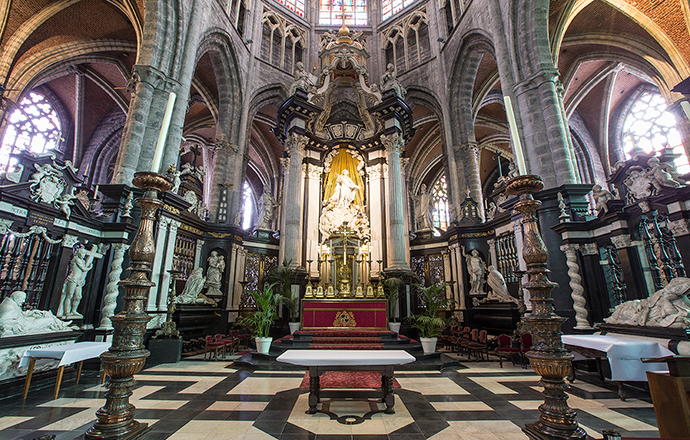
The pin-point accuracy and level of detail was far beyond what other painters were achieving at the time, and even more extraordinary is the luminosity of the paint – the brothers waited until it had begun to dry before applying it in thin layers – which is gleaming after a major restoration begun in 2012 by the Museum of Fine Arts Ghent (MSK). It is believed that around 40% of the work was overpainted aft er conception; restorers have made great strides reversing this, thereby revealing the softer face and true ‘intense’ gaze of the lamb, hidden for hundreds of years.
Belfry
Construction of the town watchtower, a symbol of civic autonomy, began in 1313. Since 1377 it has been crowned with a copper dragon weathervane (you no longer see the original) believed to have been a gift from raiding Vikings who detached the mast from their ship and presented it to residents in admiration of their bravery; the current stone spire dates from 1913.
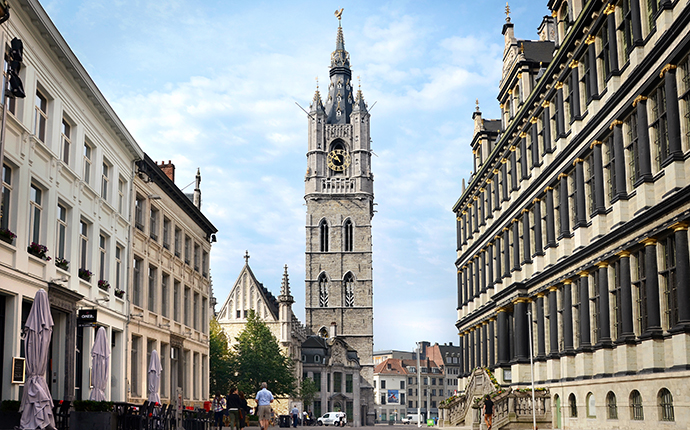
Once upon a time, merchants would send boys up the tower to look for incoming trade ships and, until 1869, four guards – kannenschijters (can shitters) – would be posted there overnight to keep watch. The climb took so long that they were unable to descend if they needed the toilet, so instead they were given a pot in which to perform their nightly ‘functions’ – hence the memorable nickname.
Gravensteen
The unlikely positioning of this moat-surrounded medieval fortress, right in the centre of Ghent, makes it all the more impressive. Built in 1180 by Philip of Alsace to make the masses cower, it was modelled on the Krak des Chevaliers stronghold in Damascus, which Philip visited during the Crusades. For 150 years it served as the dark (and damp) seat of residence of the Counts of Flanders, but towards the beginning of the 14th century Charles V’s new castle in the Prinsenhof quarter became the favoured residence of the counts when they weren’t travelling around the country keeping an eye on their domain.
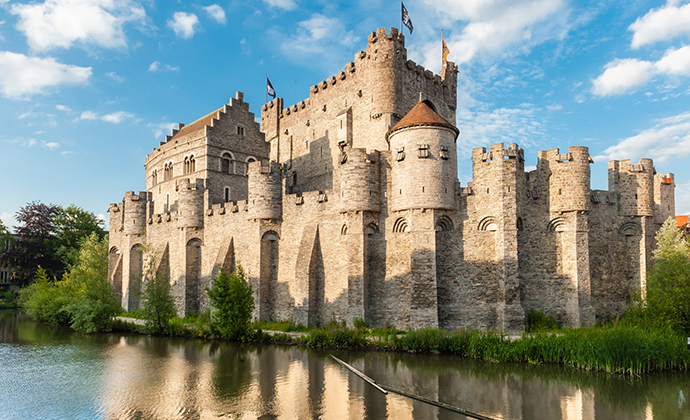
It was still used to host the odd banquet and on one occasion, in 1445, a chapter of the Order of the Golden Fleece. After that it housed the counts’ mint, but soon enough became the city prison and court of law. Grisly punishments, from flogging to burning at the stake, were administered either in the courtyard or on Sint-Veerleplein opposite; you’ll find a large selection of torture instruments on the first floor. The castle’s feared reputation hit a peak during the Inquisition under Philip II’s reign and the 17th-century witch-hunts.
Patershol
This tiny, maze-like medieval district – comprising just 13 streets – sits north of the city centre in the shadow of the Castle of the Counts. The quarter is named after an unremarkable blue door at the corner of Rodekoningstraat and Trommelstraat. Flemish for ‘monk’s arsehole’ because of its small size, the low door was the entrance to a series of steps leading down to the waterside from which locals could draw their water.
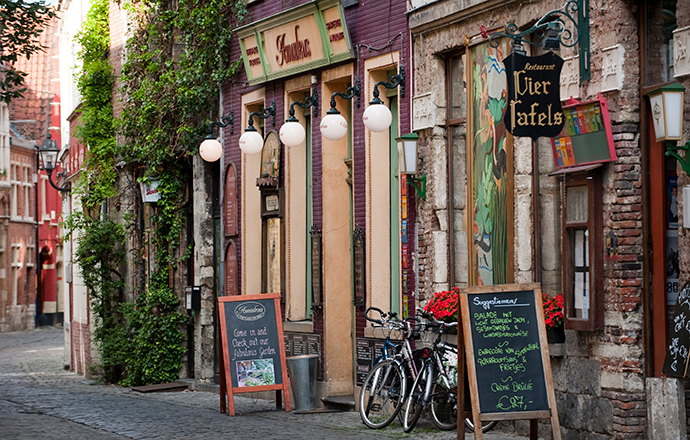
An ongoing refurbishment project has transformed the once working-class district into a hip neighbourhood with its fair share of desirable restaurants. It’s the latest in a long line of transformations that have seen the area, bordered by Lange Steenstraat, Geldmunt, Kraanlei and Oudburg, go from the property of the Counts of Flanders to a district of magistrates and lawyers, followed by craftsmen and, in the 19th century, the working class, when houses where split into smaller units. Change came only in the 1980s, and now the picturesque district is one of the city’s most popular tourist spots.
Design Museum
Composed of two very different parts – the 18th-century Hotel de Connick and a modern extension – the Design Museum is a brilliant place to come for some interior design inspiration. The collection comprises around 22,500 objects, spanning Art Nouveau gems and current design icons, but with a particular focus on Belgium’s role on the international stage.
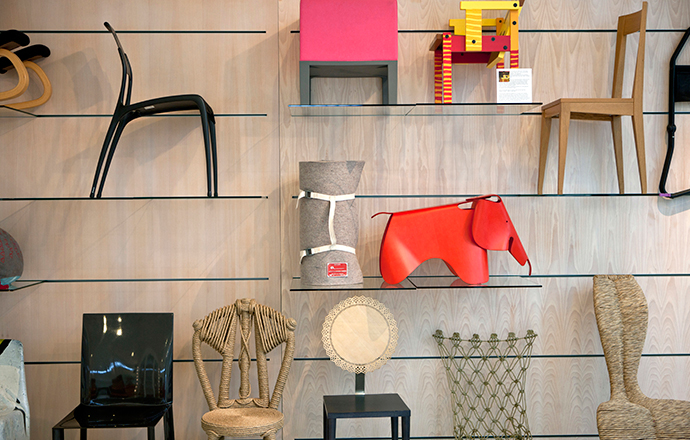
Temporary shows are often excellent, while the permanent collection is showcased through rotating displays that are less thematic than designed to make objects pop.
Hoogpoort and Nederpolder
Strolling along Langemunt brings you to Hoogpoort which, together with its add-on Nederpolder, forms the oldest street in town. Near its northern end it’s bisected by Werregarenstraat, aka ‘Graffiti Street’, which was conceived as a temporary project for the 1995 Ghent Festivities, but has been gathering tags on almost a daily basis ever since.
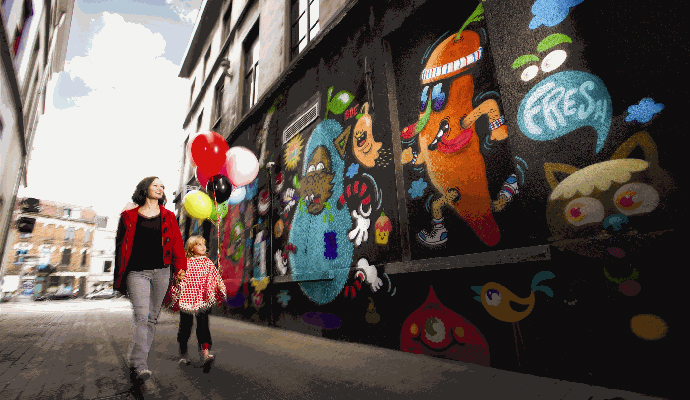
The show-stealer around here, however, is the Stadhuis. Construction of the ornate Gothic façade began in the late 15th century, but ground to a halt barely a quarter of the way through the build. Emperor Charles V’s quibbles with the city residents had begun and as a punishment he retracted all the building funds – notice the still-unfilled statue niches. The 19 that are filled were installed only in the 19th and early 20th centuries, and those of Charles V and his aunt Margaret of Austria on the corner date from 2000. By the time sufficient funds had been saved to continue with the project, late-Gothic style was no longer in vogue and the remainder, facing Botermarkt, was completed in Renaissance style, giving the building a schizophrenic air.
Bedding down
With over 35 hotels in the city centre, finding a place to sleep in Ghent isn’t hard – whether you want to bed down in a plush mansion, an ecofriendly barge or (why not?) a shipping container.
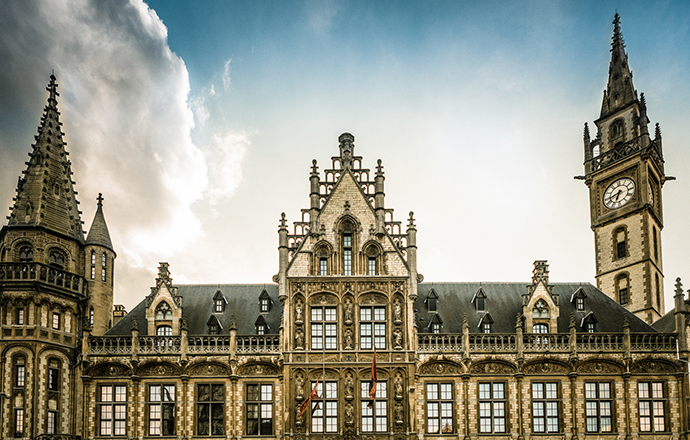
There’s more good news: in comparison to Brussels, Antwerp and Bruges, prices at even the most upmarket of establishments are incredibly reasonable, while budget travellers are well catered for too: there’s a campsite and a clutch of really impressive youth hostels to choose from.
A taste of Ghent
Not so long ago eating out in Ghent was a nice enough experience, usually based around comforting classics such as Gentse waterzooi or Gentse stoverij (chicken/fish or beef stew). When it came to the higher end of things, however, there was nothing much to shout about.
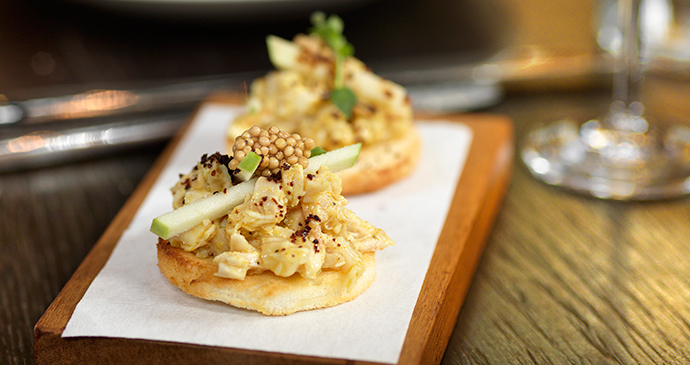
How times have changed, largely in the wake of ‘Flemish Foodies’ Kobe Desramaults, Jason Blanckaert and Olly Ceulenaere. Desramaults, who made his name with the Michelin-starred In De Wulf in West Flanders (now shut, alas), currently runs two highly acclaimed venues in Ghent. But he’s not alone: these days the city shelters six Michelin-starred restaurants and a host of creative bistros offering good-value deals.
That’s not its only calling card: in carnivorous Flanders, Ghent styles itself as Europe’s veggie capital, and every Thursday restaurants make an effort to up their vegetarian options. If you’re hankering for a quick bite, head to Ghent’s Turkish quarter on Sleepstraat. You’ll also want to try cuberdons (little noses); these purple cone-shaped candies sparked a war between two rival sellers on Groentenmarkt – as covered by international newspapers – until one went too far and was banished!
More information
Inspired to start planning a visit? Learn more in our comprehensive guide: